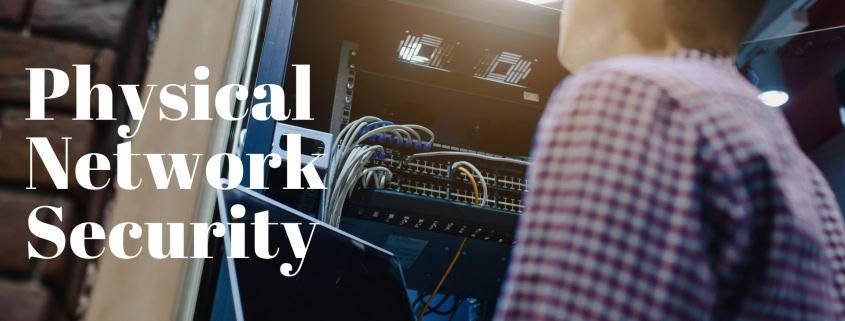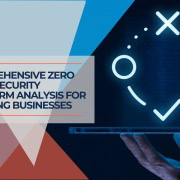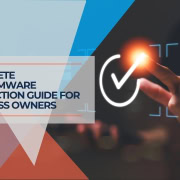Physical Network Security: Best Practices for Cabling
Network security is crucial for businesses, extending beyond software solutions to physical infrastructure. One critical yet often overlooked aspect is proper cabling. Effective cabling practices not only enhance network performance but also significantly bolster security. This article delves into how thoughtful cabling can improve network security and provides practical tips for business owners and tech enthusiasts.
Table of Contents
The Foundation of Network Security: Proper Cabling
Importance of Structured Cabling
Structured cabling provides a standardized, organized approach to connecting devices within a network. Due to its reliability and efficiency, this method is superior to ad-hoc, point-to-point cabling systems. A well-designed structured cabling system ensures consistent network performance, which is crucial for maintaining business operations.
Enhanced Performance and Reliability
High-quality cables like Cat6 and fiber optics significantly improve data transmission speeds and reliability. Adequately grounded and shielded cables minimize electromagnetic interference (EMI), ensuring data integrity and reducing latency. Additionally, neat cable management enhances airflow and cooling, which supports better network performance.
Impact on Network Speed and Performance
The quality and organization of network cabling directly affect data transmission speeds. Higher-grade cables, such as Cat6 and fiber optics, are essential for fast and reliable data transmission. Limiting the length of cable runs and reducing connection points also help maintain signal strength and minimize latency.
| Cable Type | Benefits and Recommendations |
|---|---|
| Cat5e | Outdated, not recommended for new installations |
| Cat6 | The current standard is ideal for most business needs |
| Cat8 | High-speed, suitable for demanding applications like video editing studios |
Reducing Interference and Enhancing Data Integrity
Electromagnetic Interference (EMI) and Radio Frequency Interference (RFI)
Electromagnetic interference (EMI) and radio frequency interference (RFI) are common issues that can disrupt data transmission. EMI and RFI can cause signal degradation, leading to data errors and slower network performance. Properly installed and shielded cables are essential to minimizing these interferences. Shielded twisted pair (STP) and fiber optic cables are particularly effective in reducing EMI and RFI, as they are less susceptible to these disruptions than unshielded twisted pair (UTP) cables.
Cable Shielding Techniques
Different types of cable shielding can provide various levels of protection against interference:
- Foil Shielding: Thin layers of foil are wrapped around the cable to protect against EMI and RFI.
- Braided Shielding: Woven mesh of conductive material offering more flexible protection.
- Double Shielding: Combination of foil and braided shielding for maximum protection.
These shielding techniques can significantly reduce the impact of external noise on the network, ensuring cleaner signals and more reliable data transmission.
Maintaining Data Integrity
Proper cabling is critical in maintaining data integrity by ensuring data is transmitted without errors. High-quality cables, such as Cat6 and Cat8, provide better performance and are less prone to crosstalk and signal attenuation. These cables support higher bandwidths and faster data transfer rates, which are essential for modern networks that handle large volumes of data.
Organized Cable Management
Good cable management is about aesthetics, functionality, and performance. Organized cabling reduces the risk of physical damage, minimizes interference, and makes troubleshooting easier. Labeling cables, using cable trays, and properly separating power and data cables can prevent many common data integrity issues.
Simplifying Network Management and Troubleshooting
Organization and Labeling
One of the fundamental practices in network management is organizing and labeling cables. Well-organized cabling systems allow IT professionals to identify and trace connections quickly, which is essential for efficient troubleshooting. Each cable should be labeled at both ends, indicating its purpose and destination. This practice reduces confusion and saves time when diagnosing and fixing network problems.
Patch Panels and Cable Management
Patch panels play a crucial role in structured cabling systems. They provide a central point for terminating and organizing cables, making managing and maintaining the network infrastructure easier. Each port on a patch panel corresponds to a specific cable, allowing network administrators to identify and troubleshoot any issues that may arise quickly. Patch panels also facilitate changes and upgrades, reducing the risk of disrupting the entire network during maintenance.
| Benefit | Description |
|---|---|
| Centralized Management | Simplifies the organization and maintenance of network cables |
| Easy Troubleshooting | Quick identification of wires and connections |
| Flexible Upgrades | Facilitates changes and additions without major disruptions |
| Improved Aesthetics | Tidy cabling setup |
Reducing Downtime
Proper cabling can significantly reduce network downtime. Organized cabling systems allow IT staff to locate and address issues quickly, minimizing the impact on business operations. For instance, if a specific connection fails, a well-documented cabling setup can help pinpoint the problem area without extensive trial and error.
Real-Life Example: Consider a data center with a well-structured cabling system. Each cable is labeled and terminated at a patch panel. When a connection issue arises, the network administrator can quickly trace the faulty cable back to its source and destination. This organized approach reduces the time needed to identify and fix the problem, ensuring minimal disruption to the network.
Future-Proofing Your Network
Scalability and Flexibility
A well-designed cabling system should accommodate a business's growing needs. Structured cabling systems offer the flexibility to add new devices and upgrade components without significant disruption. For example, choosing scalable cables and pathways with extra capacity can support next-generation equipment and technologies. This foresight allows businesses to expand their networks smoothly as they grow.
Compatibility with Emerging Technologies
As new technologies emerge, it's essential that the network infrastructure can support them. This includes being compatible with higher data transfer rates and advanced networking protocols. Cat6 cables, for instance, are currently the standard for most business needs, providing a good balance of performance and cost. However, for environments requiring extremely high-speed connections, such as video editing studios, Cat8 cables might be a better choice. These cables support higher bandwidths and faster data transmission rates, making them ideal for demanding applications.
Planning for Future Growth
Future-proofing your network also involves strategic planning and investment. This means selecting cabling solutions that meet current needs and anticipate future requirements. For instance, while Cat5e cables are still in use, they are outdated and not recommended for new installations. Investing in higher-grade cables like Cat6 or Cat8 ensures the network can handle increasing data loads and more sophisticated applications over time.
| Cable Type | Recommended Use | Future-Proofing Capability |
|---|---|---|
| Cat5e | Basic, small networks (outdated) | Limited, not recommended for new installs |
| Cat6 | Standard business applications | Good balance of performance and cost |
| Cat8 | High-speed, demanding applications | Excellent for future high-speed needs |
Long-Term Cost Savings
Investing in quality cabling now can result in significant cost savings in the long term. High-quality, durable cables reduce the need for frequent replacements and minimize maintenance costs. This not only ensures a stable and reliable network but also protects your investment by extending the lifespan of your network infrastructure.
Cost-Effective Cabling Solutions
Building and maintaining a robust network infrastructure can seem costly, but smart planning and strategic cabling choices can offer significant savings over time. Here are some practical, cost-effective solutions for businesses looking to optimize their network cabling without compromising performance or security.
Efficient Use of Existing Infrastructure
Reusing existing pathways and conduits can also help control costs. When upgrading your network, consider integrating new cabling with the existing infrastructure to preserve investments already made. This approach reduces the need for extensive new installations, saving time and money.
Scalable Cabling Solutions
Scalability is key to cost-effective cabling. Choose cabling solutions that allow easy upgrades and expansions without significant reconfiguration or downtime. For example, installing modular connections and scalable pathways enables seamless integration of future technologies. This adaptability is crucial for growing businesses, ensuring that the network can handle increasing data traffic and new applications as they arise.
Bulk Purchasing and Standardization
Purchasing cabling components in bulk and adhering to standardized solutions can lead to significant cost reductions. Bulk buying reduces the per-unit cost of cables and other components. Standardizing your cabling system simplifies inventory management and maintenance, reducing operational expenses.
| Strategy | Benefits |
|---|---|
| Invest in High-Quality Cables | Longer lifespan, reduced maintenance costs |
| Reuse Existing Infrastructure | Lower installation costs, maximized previous investments |
| Implement Scalable Solutions | Easy upgrades, future-proofing without extensive rework |
| Bulk Purchasing and Standardization | Lower per-unit costs, simplified management and maintenance |
Example: Consider a small business planning to upgrade its network infrastructure. By choosing Cat6 cables for their balance of cost and performance, reusing existing conduits, and buying components in bulk, the business can keep expenses in check while ensuring a robust, scalable network setup. This approach meets current needs and positions the business for future growth without frequent overhauls.
Enhancing Network Security through Cabling
Intrusion Detection and Prevention
A well-organized and properly installed cabling system simplifies the implementation of intrusion detection and prevention systems (IDPS). These systems can be more effectively integrated when the cabling infrastructure is orderly and accessible. An organized setup allows easy monitoring and quick response to any anomalies detected in the network traffic.
Compliance with Security Standards
Ensuring compliance with industry security standards is another vital aspect of network security. Standards such as ISO/IEC 27001 and NIST guidelines emphasize securing physical infrastructure. Proper cabling practices, including using secure and tamper-evident conduits, help meet these standards. This compliance enhances security and builds trust with clients and stakeholders.
Physical Security Measures
Protecting a network's physical access points is essential. This includes securing cable entry points and using locked cabinets or cages for critical network equipment. Surveillance cameras should monitor these areas continuously to deter unauthorized access. Physical barriers, such as locked doors and restricted access zones, further enhance security by limiting who can physically interact with the network infrastructure.
Minimizing Vulnerabilities
Proper cabling helps minimize vulnerabilities by reducing the risk of accidental or deliberate interference. For example, using shielded cables can prevent data leaks and reduce electromagnetic interference (EMI) and radio frequency interference (RFI), which can compromise data integrity. Additionally, well-managed cabling systems reduce the risk of damage from environmental factors like dust, humidity, and temperature fluctuations.
| Security Measure | Benefits |
|---|---|
| Organized Cabling | Simplifies monitoring improves IDPS integration |
| Compliance with Standards | Meets ISO/NIST guidelines, enhances trust and security |
| Physical Access Controls | Prevents unauthorized access, enhances physical security |
| Shielded Cables | Reduces EMI/RFI, protects data integrity |
| Environmental Protection | Mitigates risk from dust, humidity, and temperature fluctuations |
Real-Life Example: Consider a financial institution that upgraded its cabling infrastructure to include secure, shielded Cat6a cables and implemented a robust physical security protocol. The improved cabling setup not only enhanced data transmission speeds but also made it easier to monitor and secure the network. By integrating IDPS and adhering to security standards, the institution significantly reduced its vulnerability to physical and cyber threats.
Conclusion
Physical infrastructure, particularly cabling, is pivotal in safeguarding a network. Proper cabling practices enhance performance and reliability and provide critical defenses against physical and cyber threats.
Key Takeaways:
- Importance of Structured Cabling: Structured cabling systems offer a reliable and efficient framework for network connectivity, supporting higher performance and easier maintenance.
- Reducing Interference and Enhancing Data Integrity: High-quality, shielded cables can minimize electromagnetic interference and maintain data integrity, ensuring smooth and secure data transmission.
- Simplifying Network Management and Troubleshooting: Organized and labeled cabling systems facilitate quicker identification and resolution of network issues, reducing downtime and enhancing operational efficiency.
- Future-Proofing Your Network: Investing in scalable and high-quality cabling solutions ensures that the network can adapt to future technological advancements without significant reconfiguration.
- Cost-Effective Cabling Solutions: Strategic planning and bulk purchasing can optimize costs, providing a durable and efficient network infrastructure that offers long-term savings.
- Enhancing Network Security Through Cabling: Implementing physical security measures, adhering to industry standards, and ensuring organized cabling infrastructure strengthen a network's overall security posture.
By prioritizing these best practices, businesses can build a secure, reliable, and scalable network that meets current demands and is prepared for future challenges. Proper cabling is a fundamental component of network security, and investing in it is crucial for protecting valuable data and maintaining uninterrupted business operations.
This comprehensive approach to network security underscores the importance of looking beyond software solutions and recognizing the critical role of physical infrastructure. Ensuring proper cabling practices is a practical, effective way to bolster your network's defenses and support its long-term performance and security.











Leave a Reply
Want to join the discussion?Feel free to contribute!